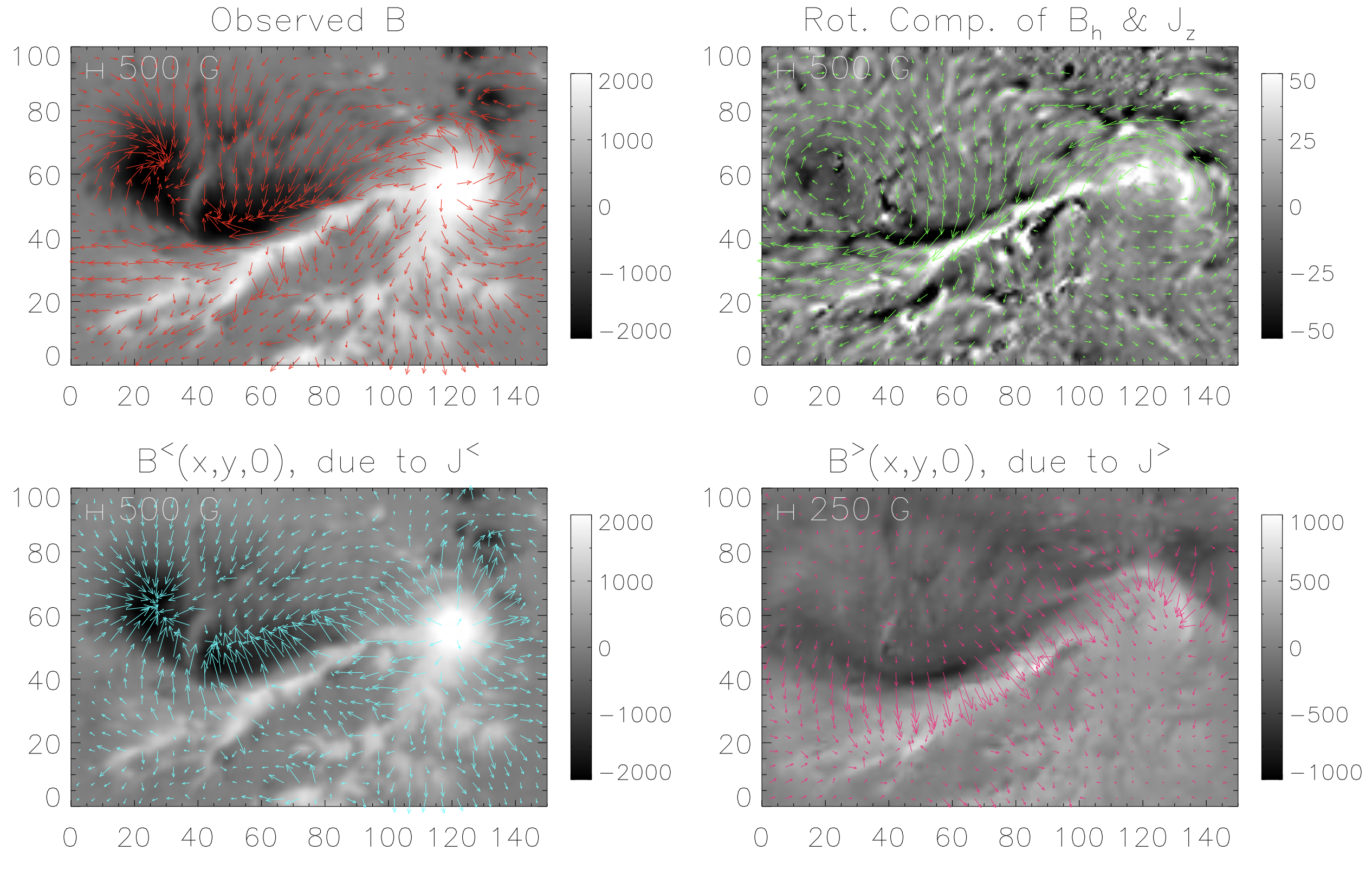Authors: Welsch, B.T.
Electric currents flowing in the coronal magnetic field are believed to store the magnetic energy that is released in solar flares and coronal mass ejections (CMEs). It is believed that the emergence of current-carrying magnetic fields across the photosphere plays a significant role in the development of flare- and CME-productive fields. Little is known, however, about the structure of electric currents in both the corona and the near-surface interior, because vector magnetic fields have only been routinely and reliably observed at the photosphere. Gauss’s separation method can be used to decompose the observed magnetic vector field at the photosphere into components arising from currents that flow: (i) in the interior (J<), (ii) across the photosphere (Jn), and (iii) in the corona (J>). It has long been known that flares and CMEs originate along polarity inversion lines (PILs), where the photospheric radial magnetic field changes sign. Output from Gauss’s separation method can qualitatively reveal some aspects of near-surface currents, notably where they are most intense (typically, along PILs), and their directions. Here, we describe two methods to empirically estimate sparsely sampled current densities above or below the photosphere on sections of PILs that can be approximated (perhaps crudely) as invariant along the PIL. For coronal currents, these methods can be tested using models of current-carrying coronal fields, e.g., non-linear, force-free field (NLFFF) models. Relatively little is known about the structure of near-surface, interior magnetic fields, and these methods are a promising tool for better understanding the structure and evolution of currents in these fields.


